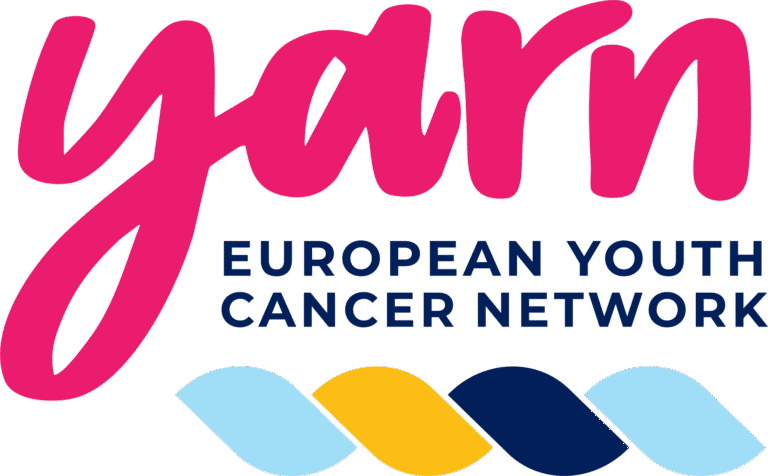
Cancer is a word that sparks fear and curiosity, but understanding its causes can empower you to make informed choices. At its core, cancer begins when cells in your body grow uncontrollably, disrupting normal functions. But what triggers this abnormal growth? The answer lies in a complex mix of genetic, environmental, and lifestyle factors.
You might not realize it, but everyday habits and exposures can play a significant role in cancer development. From smoking and poor diet to prolonged sun exposure, certain behaviors increase your risk. Additionally, inherited genetic mutations and environmental toxins can contribute to the process. While some causes are beyond your control, others are directly tied to the choices you make.
By exploring what causes cancer, you can take steps to reduce your risk and protect your health. Understanding the factors at play is the first step toward prevention and early detection.
Key Takeaways
- Cancer arises from abnormal cell growth triggered by genetic mutations, lifestyle choices, and environmental exposures.
- Genetic factors, including inherited mutations or DNA damage, contribute to cancer risk, with some cancers linked to family history.
- Lifestyle behaviors like smoking, poor diet, obesity, and alcohol consumption significantly influence cancer development.
- Environmental exposures, such as UV radiation and carcinogens (e.g., tobacco smoke, industrial chemicals), increase DNA damage and cancer risk.
- Biological factors, including certain viruses, bacteria, and chronic inflammation, play a critical role in cancer progression.
- Prevention strategies, such as healthy living, reducing harmful exposures, and understanding your genetic risks, can lower the likelihood of developing cancer.
Understanding Cancer
Cancer develops when cells in your body undergo abnormal changes, leading to uncontrolled growth and division. These changes typically occur due to mutations in genetic material. While your body has mechanisms to repair or eliminate damaged cells, certain factors may bypass these safeguards, allowing mutated cells to proliferate.
Genetic mutations can result from inherited traits, acquired DNA damage, or a combination of both. Inherited mutations are passed down from your parents, increasing susceptibility to specific cancer types, such as breast or colorectal cancer. Acquired mutations often occur over time, influenced by external factors, including carcinogen exposure or aging.
Environmental and lifestyle elements also affect cancer development. Prolonged exposure to harmful substances such as tobacco smoke, ultraviolet radiation, and industrial chemicals can damage DNA. Personal habits like diet, alcohol consumption, and physical activity levels further influence cancer-related risks. Frequent or long-term engagement in unhealthy behaviors amplifies the likelihood of cellular abnormalities.
Cancer development follows a step-by-step progression. From initial genetic alterations, cells accumulate changes that impact their growth regulation, evasion of apoptosis (cell death), and ability to spread. Understanding this process provides insight into potential prevention and early detection strategies. Recognizing how these factors interact equips you to take proactive steps toward reducing risk.
Genetic Factors Behind Cancer
Genetic factors influence cancer development through mutations in DNA and inherited genetic predispositions. These factors shape how cells grow, divide, and respond to damage.
Mutations in DNA
Mutations in DNA alter the structure or function of genes that regulate cell activity. These changes disrupt normal cell processes, often causing unchecked growth. Mutations may occur spontaneously during cell division or from external influences like carcinogen exposure (e.g., tobacco or UV radiation). Key gene types involved include:
- Oncogenes – Accelerate cell division when mutated.
- Tumor Suppressor Genes – Fail to regulate or stop cell growth when damaged.
- DNA Repair Genes – Allow further mutations by mishandling genetic errors.
Each contributes to cancer progression when malfunctioning.
Hereditary Cancer Risks
Inherited genetic mutations heighten cancer risk by programming cells to function abnormally from birth. About 5-10% of all cancers link to hereditary mutations passed from parents. Conditions like BRCA1/BRCA2 mutations increase breast and ovarian cancer likelihood, while APC mutations raise colorectal cancer risks. Recognizing family medical histories and seeking genetic testing can help identify these risks early.
Lifestyle and Environmental Causes
Certain lifestyle choices and environmental exposures can significantly impact your cancer risk. Identifying these factors helps you take preventive measures and make informed decisions about your health.
Tobacco Use
Tobacco use is responsible for approximately 30% of all cancer-related deaths, according to the American Cancer Society. Cigarette smoking contains over 70 known carcinogens, such as benzene, formaldehyde, and arsenic, which increase your chances of developing lung, throat, mouth, bladder, and pancreas cancers. Chewing tobacco and secondhand smoke also contribute to cancer risks. Limiting tobacco exposure reduces the likelihood of these outcomes.
Diet and Obesity
Excess weight accounts for about 13 types of cancer, including breast, colorectal, and liver cancers, as reported by the World Health Organization. Diets high in processed foods, red meats, and added sugars can increase inflammation, insulin resistance, and cell growth abnormalities, raising cancer risk. Conversely, consuming fruits, vegetables, whole grains, and lean proteins supports your body’s natural defenses. Maintaining a healthy weight and balanced nutrition are key preventive strategies.
Exposure to Carcinogens
Regular exposure to carcinogens increases your risk of DNA mutations, which can lead to cancer. Workplace chemicals like asbestos, formaldehyde, and benzene are common culprits in occupational settings. Environmental toxins, such as air pollution and industrial waste, also contribute to cancer development. Monitoring chemical exposure in your daily environment can play a critical role in prevention.
Radiation Exposure
Radiation exposure, both natural and artificial, poses a cancer risk when persistent or at high doses. Ultraviolet (UV) rays from sunlight contribute to skin cancers, including melanoma. Medical procedures like X-rays and CT scans, though beneficial, slightly elevate risks if exposure becomes excessive. Radon gas, emitted from soil and rocks, is a leading cause of lung cancer after smoking. Using sunscreen, limiting sun exposure, and ensuring regulated medical radiation help minimize risks.
Biological and Medical Influences
Biological and medical factors contribute significantly to cancer development. These influences often interact with genetic, environmental, and lifestyle elements, further increasing the risk.
Viruses and Bacteria
Certain viruses and bacteria can lead to cancer by causing persistent infections or altering cellular functions. Human papillomavirus (HPV), for example, is linked to cervical, throat, and anogenital cancers, while chronic hepatitis B and C infections contribute to liver cancer. Helicobacter pylori, a bacterium that infects the stomach lining, can lead to gastric cancer if left untreated. Understanding these pathogens’ role is crucial for prevention, particularly through vaccination and early treatment.
Hormonal Factors
Hormonal imbalances or prolonged exposure to specific hormones can influence cancer risk. Elevated estrogen levels, due to hormone replacement therapy or prolonged exposure during one’s lifetime, can raise the likelihood of breast and endometrial cancers. Similarly, increased androgen activity links to prostate cancer. Recognizing hormonal influences helps in managing risks through lifestyle changes and medical interventions.
Chronic Inflammation
Chronic inflammation damages tissues over time, promoting cancer development. Diseases like Crohn’s disease or ulcerative colitis, which cause prolonged inflammation, increase the risk of colorectal cancer. Persistent inflammation, whether caused by infections or autoimmune issues, leads to DNA damage and cellular changes conducive to cancer growth. Addressing inflammatory conditions with appropriate treatments reduces these risks effectively.
Conclusion
Understanding what causes cancer empowers you to take control of your health. While some factors, like inherited genetic mutations, are beyond your control, many risks can be managed through informed choices. By adopting healthier habits, minimizing exposure to carcinogens, and staying vigilant with regular screenings, you can significantly reduce your risk.
Awareness is your strongest tool in prevention. Recognizing the interplay between genetic, environmental, and lifestyle factors allows you to make decisions that promote long-term well-being. Small, proactive steps today can make a big difference in protecting your future health.
Frequently Asked Questions
What causes cancer?
Cancer is caused by uncontrolled cell growth resulting from genetic mutations. These mutations can be inherited or acquired due to factors such as aging, lifestyle choices, environmental toxins, and exposure to carcinogens like tobacco smoke or radiation.
Can lifestyle choices increase cancer risk?
Yes, habits like smoking, poor diet, lack of exercise, excessive alcohol consumption, and sun exposure can significantly increase cancer risk. Maintaining a healthy lifestyle can help lower this risk.
How does obesity contribute to cancer?
Obesity increases inflammation, hormone imbalance, and cellular stress, which are linked to about 13 types of cancer. Maintaining a healthy weight through diet and exercise lowers cancer risk.
Is cancer hereditary?
Around 5-10% of cancers are hereditary, caused by inherited genetic mutations like BRCA1 or BRCA2. Identifying family medical history helps assess genetic predisposition.
What are common environmental causes of cancer?
Environmental causes include exposure to carcinogens such as tobacco smoke, pollution, workplace toxins, and radiation. Reducing exposure to these factors can lower cancer risk.
How can diet impact cancer risk?
A healthy diet rich in fruits, vegetables, and whole grains can lower cancer risk by supporting the immune system, while a poor diet and processed foods increase the likelihood.
What is the role of viruses in cancer development?
Certain viruses, such as human papillomavirus (HPV) and hepatitis B/C, can cause persistent infections that lead to cancer. Vaccination and early treatment reduce these risks.
Are genetic mutations always inherited?
No, genetic mutations can be inherited or acquired. Acquired mutations occur due to factors like aging, exposure to carcinogens, and unhealthy habits.
Can early detection reduce cancer risk?
Early detection doesn’t reduce risk but increases the likelihood of successful treatment. Regular screenings and recognizing early symptoms are critical for better outcomes.
What preventive measures lower cancer risk?
Preventive measures include not smoking, maintaining a healthy weight, eating a balanced diet, exercising, minimizing sun exposure, managing stress, and getting regular screenings.






Comments
Thank you. Comment sent for approval.
Something is wrong, try again later